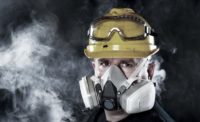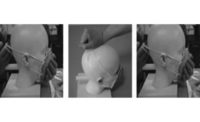By Ziqing Zhuang, PhD; Michael Bergman, MS; and Jaclyn Krah, MA
Results of a recently completed National Institute for Occupational Safety and Health (NIOSH) study confirm the necessity of the current Occupational Safety and Health Administration (OSHA) respirator fit testing requirement, both annually and when physical changes have occurred. The study’s conclusions emphasize that respirator users who have lost more than 20 pounds should be re-tested to be sure that the current size and model of respirator in use still properly fits. For over three years, NIOSH researchers followed a cohort of 229 subjects measuring N95 filtering facepiece respirator (FFR) fit and physical characteristics (e.g., face size, weight) every six months. Prior to this study, very little research existed looking at the relationship between respirator fit over an extensive period of time and the change in facial dimensions, as could be caused by weight gain or loss. OSHA requires FFR users to undergo an annual fit test, which is vital to ensuring continued proper respirator fit. In addition to annual fit testing, OSHA requires that fit testing be repeated “whenever an employee reports, or the employer or the physician or other licensed health care professional makes visual observations of changes in the employee’s physical condition that could affect respirator fit (e.g. facial scarring, dental changes, cosmetic surgery, or an obvious change in body weight.” (OSHA, 1998)
Background
The appropriate length of time between respirator fit tests has been a point of debate and discussion for many years. Fit testing can be time-consuming and a burden to workplace resources (Zhuang, 2015). OSHA addressed these concerns in 1998 when publishing the respiratory protection standard (OSHA, 1998). During the public comment period for OSHA’s rulemaking, data from four companies were considered in establishing the annual fit test requirement. Three of the companies reported <3% of employees failed fit testing after 1 year and one company conducting biannual fit tests found that 7% of their employees switched to different sizes or models because of a failed fit test. OSHA considered a two-year 7% failure rate unacceptable (meaning that a high percentage of employees could be relying on poor-fitting respirators if not fit tested annually), and thus supported an annual fit testing requirement (OSHA, 1998).
In 1999, NIOSH endorsed all provisions of OSHA’s 29 CFR Part 1910.134 relating to the frequency of fit testing. Despite this endorsement, questions surrounding the frequency of respirator fit testing remained from employers (e.g., especially those in the healthcare sector) and the industrial hygiene community. Examples are located in the comments to a previous NIOSH science blog on this topic titled Frequency of Respirator Fit Testing. In response to these continued concerns, NIOSH initiated a study to address three primary questions:



